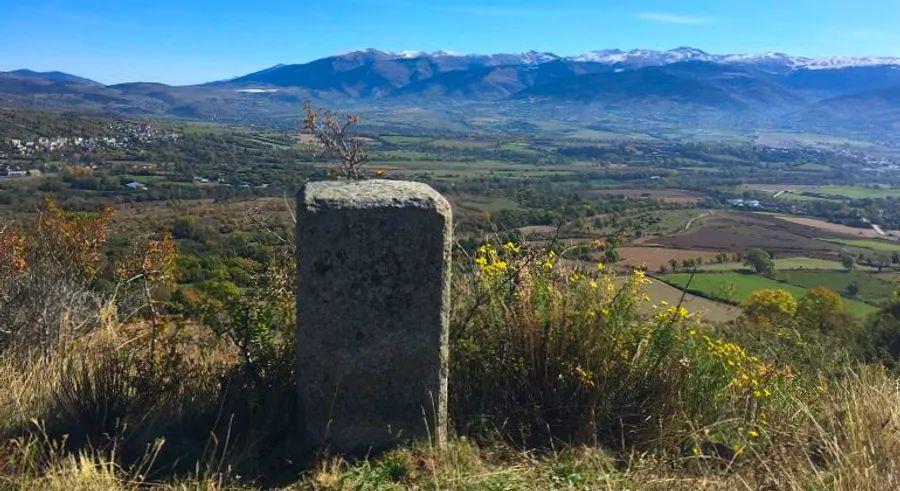Llivia: The Spanish Enclave Lost in France

From the castle’s vantage point, the breathtaking view makes it clear why ancient empires fought so fiercely to control this lush valley, tucked between the towering, snow-covered Catalan Pyrenees.
From this perspective, it’s hard to grasp why this small plot of land once represented the final missing piece in a monumental continental geopolitical puzzle.
Step into Llívia, a charming piece of Spain stranded within French borders, one of Europe’s oldest surviving enclaves.
A Continent in Turmoil
At first glance, the modern border between France and Spain appears to follow clear natural boundaries, with the towering Pyrenees mountain range – home to several peaks soaring over 10,000 feet – acting as a decisive separation between the two nations.
However, the history behind this border is shaped as much by wars and diplomacy as by the natural landscape itself.
Nearly four centuries ago, Central Europe was engulfed in a conflict that would later be known as the Thirty Years’ War. Among its many battles was the Franco-Spanish War, which stretched from 1635 to 1659.
When the Principality of Catalonia, which had long straddled both sides of the Pyrenees, fell under the control of Spanish monarchs, so too did its northern territories.
This development posed a direct challenge to France’s longstanding ambition of securing what it considered its natural borders, setting the stage for difficult negotiations.
A Royal Alliance
At last, France and Spain seemed on the verge of finalizing a deal, complete with a royal wedding to seal the accord: Louis XIV of France was set to marry a Spanish princess.
There was just one remaining issue: how to define the exact border between the two nations.
The negotiations stretched on for months, and although the Treaty of the Pyrenees was signed in November 1659, it only provided a broad outline of the agreement, leaving some border details unresolved. Full resolution would take time and require creative compromises.
Take, for example, Pheasant Island, the small piece of land in the middle of the Bidasoa River where the treaty was signed. For centuries, it served as a symbolic “no man’s land,” where international agreements were made, and royal marriages exchanged between the two kingdoms.
This uninhabited island, located at the far western end of the border and covering just 6,820 square meters, maintained its unique status until 1866 when it was designated a 'condominium' under international law. Sovereignty alternates every six months: Spain controls it from February to July, and France takes over from August to January.

The Green Valley
A more complex dispute arose in the Cerdanya valley, located several hundred miles to the east. With no clear natural boundaries, this section of the border presented a significant challenge for both Spanish and French negotiators.
Contrary to popular belief, the border in the Cerdanya region wasn’t settled at the Treaty of the Pyrenees but was postponed until later because France and Spain couldn't agree on its location. 'Both sides wanted to claim the entire valley,' explains historian and author Michel Bougain, an expert on the period.
The true divide, based on the water table, actually lies north of the current border. However, the French rejected this option, preferring a line much farther south that would have left most of the Pyrenees within French territory. France was prepared to defend this claim with its considerable military forces.
The negotiations dragged on so long that Spanish negotiator Luis Méndez de Haro threatened to cancel the impending marriage between Louis XIV and the Spanish Infanta Maria Theresa, the eldest daughter of the Spanish king, unless the Cerdanya border dispute was resolved.
Once the more hardline De Haro was replaced, the two delegations – who, notably, didn’t consult the local population – were finally able to agree on a solution for the border division.
Yet, this was far from the conclusion of the story.
What’s in a Word?

The issue arose when the final agreement referred to '33 villages' in the disputed area that were to be transferred to France.
At the heart of this French-designated area lay the ancient settlement of Llívia. The Spanish argued that Llívia wasn’t a village but a town, as it held that status under Catalan law, placing it a step higher in the urban hierarchy.
A small detail that would have far-reaching consequences.
The French protested, but the Spanish held firm. In the end, the King of Spain retained control over Llívia, thanks to this technicality. However, the settlement, which dates back to Roman times, would remain an enclave, completely surrounded by French territory.
To appease the French, Spain offered the neighboring Carol Valley, a strategically important area due to its control over the road to Toulouse.
It was a solution worthy of King Solomon: the territory was split down the middle. While simple in theory, it failed to account for the local complexities.
The new border divided communities that, even today, share a common language and cultural identity to some extent.
How Llívia Became an Enclave
At the time, it wasn’t clear that Llívia would become an enclave,” says Bougain. “The maps used by the delegations were imprecise, and it wasn’t until later, when the border was finalized, that they realized a narrow strip of land – transferred to France from two nearby villages – had effectively isolated Llívia from the rest of Spain.
These borders were formally ratified in the Treaty of Bayonne in 1866. The road connecting Llívia to the Spanish mainland was also designated as a 'free passage.' Little did they know that a century later, this special status would lead to the so-called 'War of the Stops.'
In the early 1970s, France constructed two roads intersecting with the international road and granted them right of way. Llívia’s residents, outraged, began removing the 'Stop' signs installed by the French, viewing them as a violation of the international agreement.
The dispute was eventually resolved years later with the construction of an overpass and traffic circle. However, until the Schengen Agreement came into effect in 1985, only cars with Spanish license plates were allowed on the road. Despite passing through French territory, the main access road to Llívia was still considered part of Spain’s national road network.
A More Serious Conflict Arrives in Llívia
During the final stages of the Spanish Civil War, as Franco's army approached the border, they had to seek permission from the French government to continue their march toward Llívia. Contemporary photographs reveal soldiers crossing a mile and a half of French territory, closely observed by French gendarmes stationed along the road.
A Membrane, Not a Barrier

Today, visitors are greeted by a very different landscape. With most internal EU borders gone, connections between both sides have been reestablished (if they ever really disappeared). Although locals may hold different passports, many still share a common Catalan language and cultural heritage.
“The border has become a significant part of local identity,” says François Mancebo, professor of sustainability and urban planning at the University of Reims, and an expert on the region’s cross-border dynamics. “It presents challenges, but it’s also become a source of income for those able to exploit the system, through both legal and illegal trade.”
“People on both sides maintained close ties, often even marrying across the border… I would describe the border more as a membrane than a barrier.”
A key turning point for the region came in the 1980s with the opening of the Cadí Tunnel, which runs under the Serra de Moixeró mountain range. This major infrastructure project greatly improved access to the Barcelona area and brought an influx of both visitors and economic growth.
“Initially, the removal of the hard border caused a bit of confusion,” recalls Professor Mancebo, “but soon both sides began to reap the benefits of new economic opportunities.”
For example, the French side has leaned southward, attracting significant private investment and witnessing a revival of Catalan identity.
One of the most visible symbols of this growing unity is the 2014 inauguration of a new, state-of-the-art cross-border hospital. Situated almost exactly on the border, it stands as the first EU hospital designed to treat patients from two different member states without barriers.
Today, the valley has transformed into a popular vacation destination, drawing tourists to its ski resorts and mountain trails. Vacation homes, shops, and businesses have sprouted on both sides of the border, breathing new life into what were once fading rural communities.

1

2

3

4

5
Evaluation :
5/5